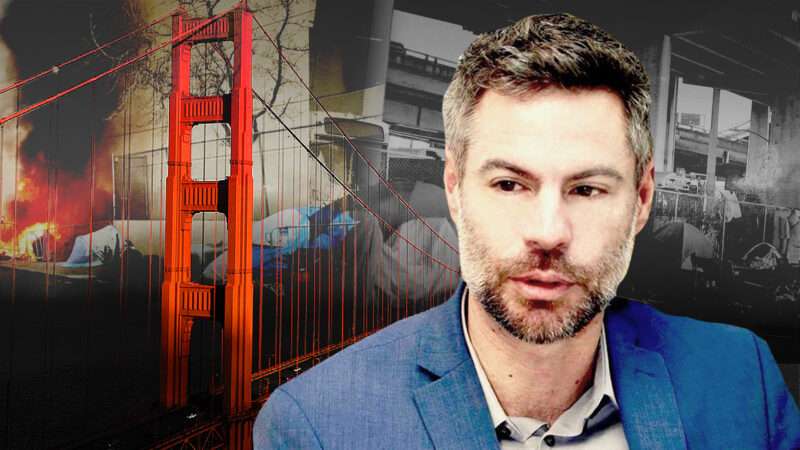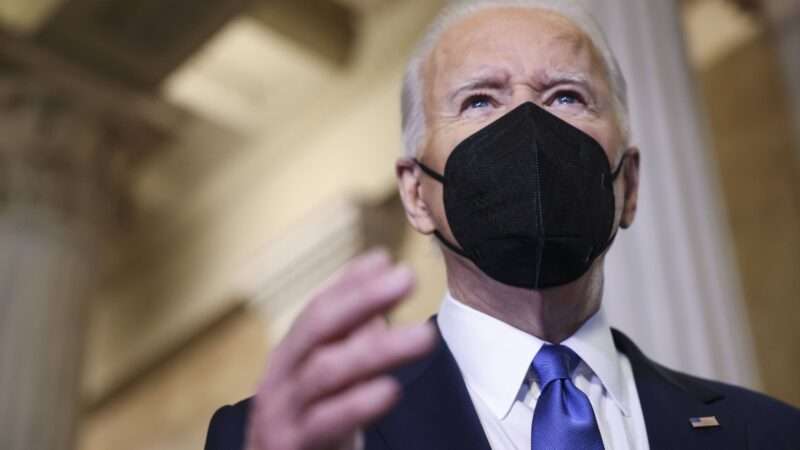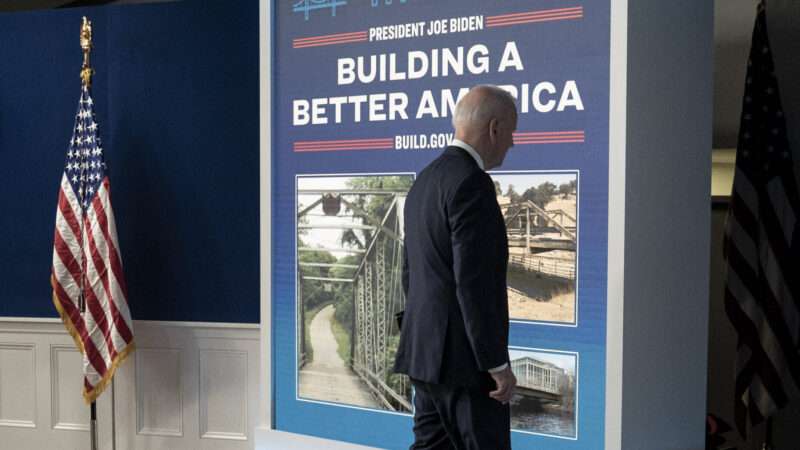As Joe Biden’s presidency enters its second year, there is little question that he is flailing, even failing, with a stalled agenda in Congress, plummeting approval ratings, collapsing support for Democrats, and a general sense of malaise about the pandemic, the economy, and the country’s overall direction permeating the national mood. To understand both why it’s happening and why it’s likely to be difficult for Biden to change course, it’s worth looking back at Biden’s presidential campaign.
When Biden ran, there were two parallel stories that you could tell about his approach and his aims: The first was that he was a moderate, that he was a conventional center-left president who wasn’t too online or too progressive. Rather, he was a candidate with a long record in the Senate and established relationships in Washington who wanted to turn down the temperature of national politics relative to the Donald Trump years and work across the aisle in order to bring a pandemic-wracked country back to normal.
This was the story Biden that told about himself, and it was probably the story that Biden told to himself as well, since he seemed to genuinely believe that he represented an antidote to the party’s leftward march. As he said in a debate against Trump, responding to criticisms that he was essentially a puppet of his party’s socialist-curious progressive faction, “I am the Democratic Party.” With Joe Biden at the helm, his declaration seemed intended to say, how far left could the party really be? And thus this was the story that many voters—especially the ones who only tuned in for a snippet of a speech or part of a primary debate or a few minutes of nightly news coverage—heard.
But there was another story you could tell too, and that was of the Biden campaign operation, and the raft of left-leaning polices it carried along with it. Biden’s various plans for health care, climate, education, and so forth didn’t lean as far to the left as the plans from Sen. Bernie Sanders (I–Vt.), but by multiple accounts they represented the most progressive agenda in history, with trillions in new spending aimed at boosting government’s role in nearly every aspect of daily life and the economy.
These twin identities worked for Biden on the campaign trail because they allowed him to appeal, on the one hand, to less partisan, less politically engaged voters tired of the White House melodrama and virus-born economic and social upheaval of the Trump years, and on the other hand to committed Democratic partisans who had increasingly moved to the left, and who believed that the post-Trump era demanded radical change. Thus Biden won by appealing both to the enraged left and the exhausted center, the committed partisans and the people who just wanted a president they could safely ignore.
But once in office, those twin identities created a disconnect. Biden had campaigned on what amounted to an implicit promise to be both a warrior for progressive change and an affable moderate who simply returned things to the way they were, whatever that was supposed to be. There was effectively no way to fulfill both promises and make both groups happy.
And, to make matters worse, Biden’s presidency descended into intra-party battles over longstanding activist priorities that had little or nothing to do with the COVID-19 pandemic or the very real economic travails—particularly inflation—the American economy was facing, problems that voters understood Biden’s own policies to be exacerbating.
It’s not too hard to understand why this happened; political parties are powerful organizing forces, and it’s all too easy for them to exert more influence on a president’s day-to-day priorities than more loosely attached normie voters who don’t view politics as a hobby or a passion. The various activist groups, congressional staffers, party organizers, and political appointees simply have a louder voice than those who choose to mostly spend their time and mental energy on the world outside of politics.
That’s especially true when the person at the top is someone like Biden—a “rusty weathervane,” in Matt Welch’s memorable coinage, who has always been at the forefront of the Democratic Party’s priorities. From court appointments to tough-on-crime laws to tracking stimulus spending, Biden has always served as a point-person, a figurehead for the Democratic Party’s agenda-item-of-the-moment, but he’s rarely acted as an independent leader who sets that agenda himself.
So while it’s true enough that Biden is, in some sense, the Democratic Party, the reverse is also true: The Democratic Party is Joe Biden, and that it’s the Democratic Party—with all of its internal conflicts and obsessions and activist-driven agenda items—that is acting through the White House right now.
To some degree, of course, that’s true in every modern administration, since the president serves as the de facto head of a political party. But the effect is more powerful with a lifelong figurehead politician like Biden, whose job is less to lead the party than to contain and manage its competing factions.
This explains the Biden administration’s unwillingness, so far, to meaningfully prioritize among the component parts of his spending bill, preferring to give a little bit to each of the party’s issue activists. It helps explain his quixotic support for both a doomed voting rights bill and divisive Senate procedural reforms that won’t take effect. And it also helps explain why under Biden, Democrats have consistently acted as if they have a commanding majority, and a mandate for radical change, despite their incredibly slim, almost-didn’t-happen holds on the House and the Senate, and why Democratic defections from the party line have sometimes been treated as acts of defiance against a majority, as if Republicans simply didn’t exist. Biden views himself as a moderate, period, but he is better understood as a moderate within the Democratic Party, and his lifelong inability to distinguish between the party and the country means that he is mostly focused on trying to unite the party—but not the country as a whole.
And this, in turn, sheds light on why Biden has so far been unable to serve the voters who went for him in 2020 because they wanted a return to normalcy and all that entailed—primarily a tolerable economy and a pandemic that no longer disrupted everyday life, but also less apocalypticism in Washington and less political rancor.
Those less partisan, less engaged voters—the kind who supported Biden mostly because he wasn’t Trump—are the sort of voters who, by and large, determine the success or failure of a presidency. And for them, Biden the president is failing to deliver on the promises of Biden the candidate. Ironically, Biden is also failing to deliver the sort of big-ticket policy change demanded by the progressive base. On its current trajectory, it won’t be long before Biden’s presidency moves from “is failing” to “has failed.”
The post Joe Biden's Presidency Is Failing Just About Everyone appeared first on Reason.com.
from Latest – Reason.com https://ift.tt/3Kqwzmc
via IFTTT





